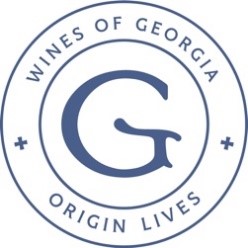
Georgian Wine Exports to the U.S. Surge 88% During the First Half of 2019
July 12, 2019PRESS RELEASE
New York, NY / July 12, 2019: The National Wine Agency of the country of Georgia, a division of the Ministry of Agriculture, released half-yearly 2019 export figures which reflect continued dramatic market growth in the U.S. The U.S. is now the 10th largest Georgian export market (+88% YOY). This increase follows a three-year average growth surge of 54% year on year.
“This growth can be attributed three variables,” reported Julie Peterson, Managing Partner of Marq Wine Group, which has been leading strategy for the region over the last four years. “Wine professionals have discovered that wines made from indigenous Georgian varietals reflect a deep sense of ‘place’ and are now introducing them to American consumers at increasing rates. In addition, there is growing interest in natural wines and because of the Georgian winemakers are stilling practicing their ancient tradition, they stand at the epicenter of this movement. Finally, the ‘amber’ or skin contact wine category which emerged a few years ago continues to build exponentially.
New York City based sommelier Pascaline Lepeltier, MS of Racines NY says: “Low-intervention wines – which often encompass natural, organic, and biodynamic practices – are a growing movement, for which traditionally-made Georgian wines are one of the most remarkable examples: not because of anything new they are doing, but because they have been making wines this way for 8,000 years.”
The small country of Georgia – located about 1000 km due east of Rome and slightly larger than West Virginia – has a millennia-old home-winemaking tradition. Bordered by Russia, Azerbaijan, Armenia, Turkey, and The Black Sea, Georgia is at a literal geographic crossroads and was on the historic Silk Route. While this location contributed to the country’s rich artistic, culinary, religious, and cultural tapestry, it also invited invasion after invasion. The continual outside influence solidified a strong Georgian identity, as well as created a home winemaking tradition. Today, there are more than 100,000 registered home wineries in this tiny country, as well as 500 registered wine companies. There are a staggering 525 grape varieties currently recorded, with 45 in current commercial production. Fifty-thousand hectares are planted to vine across ten official wine regions.
About the Wines of Georgia
Home to more than 525 indigenous grape varieties, Georgia’s wine industry has been transformed from a home cottage industry into an artisanal powerhouse, with winemakers producing some of the world’s most unique and distinctive fine wines using both qvevri and European winemaking methods.
The location of the origin of wine has been determined to be in Georgia and dated during the Neolithic period. In 2016 in southwest Georgia, archaeologists discovered clay vessels containing cultivated grape seeds that were dated to 6000 BC using archaeological, archaeobotanical, climatic, and chemical methods. The results were published in an article, Early Neolithic wine of Georgia in the South Caucasus in November 2017 by the National Academy of Sciences.
Continually, since the 6th century BC, Georgians have made wine in qvevris, giant clay vessels lined with beeswax and buried underground to keep temperatures constant. Winemakers ferment the juice in these vessels, simultaneously allowing the grape skins to macerate with the juice, which turn what many American consumers expect to be white wines into an amber color, and adding tannin to both the resultant amber and red wines. (European vintners ferment red grapes along with their skins and stems to lend them color and tannins, but omit them when making white wine.)
Qvevris are still made by hand by one of Georgia’s five “master” qvevri-making families; there is an ever-increasing demand for wine produced in this tradition, both in Georgia and around the world. This tradition of winemaking defines the lifestyle of families and local communities and forms an inseparable part of their cultural identity and inheritance. In 2013, the United Nations added qvevri winemaking to the UNESCO list of “Intangible Cultural Heritage of Humanity.”
The National Wine Agency of Georgia is tasked to preserve the country’s qvevri winemaking tradition, control the quality of all Georgian wines, and promote these wines globally.
